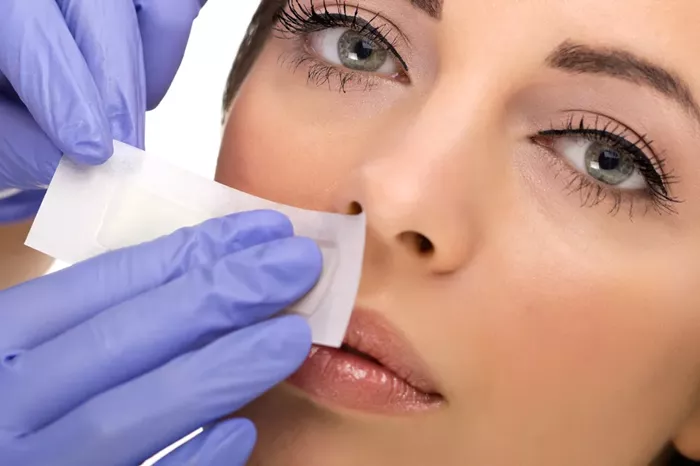Rhinoplasty, commonly referred to as a nose job, is a popular cosmetic procedure aimed at altering the shape and structure of the nose. However, not all rhinoplasty surgeries yield the desired outcomes. In some cases, patients may seek a secondary, or revision, rhinoplasty. This secondary procedure is performed to address issues arising from the initial surgery. This article explores seven compelling reasons why individuals may opt for a secondary rhinoplasty.
1. Unsatisfactory Aesthetic Results
Initial Expectations Not Met
One of the primary reasons for seeking a secondary rhinoplasty is dissatisfaction with the aesthetic outcome of the initial surgery. Patients may find that their nose does not align with their expectations. The nose may appear unnatural, asymmetrical, or disproportionate to other facial features. Revision rhinoplasty aims to correct these aesthetic concerns, providing a more harmonious and pleasing appearance.
Changes in Personal Aesthetic Preferences
Over time, personal preferences for facial aesthetics can evolve. A nose shape that was once considered desirable may no longer align with a patient’s current preferences. In such cases, a secondary rhinoplasty allows patients to modify the shape of their nose to better match their updated aesthetic goals.
2. Functional Issues Post-Surgery
Breathing Difficulties
Rhinoplasty is not only a cosmetic procedure but can also address functional issues. However, in some cases, the initial surgery may inadvertently cause or exacerbate breathing difficulties. This can result from improper correction of the nasal structure, leading to obstructions or collapse of the nasal passages. Secondary rhinoplasty can correct these issues, improving nasal function and ensuring the patient can breathe comfortably.
Structural Complications
Post-surgical structural complications, such as a deviated septum or collapsed nasal valves, can arise after the initial rhinoplasty. These issues can significantly impact nasal function and overall quality of life. A secondary rhinoplasty can address these structural concerns, restoring proper function and enhancing the patient’s breathing capabilities.
See Also: 6 Ways to Reduce Swelling After Rhinoplasty
3. Healing and Scar Tissue Complications
Excessive Scar Tissue Formation
The healing process after rhinoplasty can sometimes result in the formation of excessive scar tissue. This can lead to irregularities in the nose’s appearance and may affect its functionality. Secondary rhinoplasty can remove or reduce scar tissue, creating a smoother and more natural-looking result.
Improper Healing and Asymmetry
In some cases, the healing process may not proceed as expected, resulting in asymmetry or other irregularities. This can occur due to factors such as poor post-operative care, individual healing characteristics, or complications during the initial surgery. Revision rhinoplasty can address these issues, ensuring a more symmetrical and aesthetically pleasing outcome.
4. Trauma or Injury After Initial Rhinoplasty
Accidental Trauma
Accidental trauma to the nose after the initial rhinoplasty can disrupt the surgical results and lead to deformities. Injuries such as falls, sports-related accidents, or other forms of trauma can damage the delicate nasal structures. A secondary rhinoplasty can repair the damage caused by trauma, restoring the nose to its desired shape and function.
Long-Term Impact of Minor Injuries
Even minor injuries can have a long-term impact on the results of the initial rhinoplasty. Over time, these injuries can cause shifts or changes in the nasal structure. Revision rhinoplasty can correct these changes, ensuring the nose remains in its intended shape and function.
5. Aging and Natural Changes in Nasal Structure
Effects of Aging on Nasal Appearance
As we age, natural changes occur in the nasal structure. The skin may lose elasticity, and the underlying cartilage can weaken, leading to alterations in the nose’s appearance. These changes can affect the results of the initial rhinoplasty. Secondary rhinoplasty can address the effects of aging, maintaining or restoring the desired nasal aesthetics.
Progressive Changes in Nasal Shape
In some cases, the changes in nasal shape post-rhinoplasty may continue to evolve over time. This can be due to factors such as gravity, changes in skin thickness, or other natural processes. Revision rhinoplasty can help manage these progressive changes, ensuring the nose retains its desired shape and proportion.
6. Technological and Surgical Advancements
Improvements in Surgical Techniques
The field of rhinoplasty continually evolves, with advancements in surgical techniques and technology. Patients who had rhinoplasty many years ago may benefit from these improvements. Secondary rhinoplasty allows patients to take advantage of the latest techniques, which can provide better results, reduced recovery times, and minimized risks.
Enhanced Precision and Outcomes
New technology, such as computer-assisted imaging and 3D modeling, enhances the precision of rhinoplasty procedures. These advancements allow surgeons to achieve more accurate and predictable outcomes. Patients who are unhappy with their initial results can benefit from these technological advancements through secondary rhinoplasty.
7. Psychological and Emotional Well-Being
Boost in Self-Confidence
The appearance of one’s nose can significantly impact self-esteem and confidence. If the initial rhinoplasty did not meet the patient’s expectations, it could lead to dissatisfaction and lowered self-confidence. Secondary rhinoplasty can improve the nose’s appearance, leading to increased self-esteem and a positive self-image.
Emotional Healing and Satisfaction
Undergoing revision rhinoplasty can also have emotional benefits. Patients who were unhappy with their initial results may experience frustration, disappointment, and even distress. Successfully addressing these concerns through secondary rhinoplasty can provide emotional healing and a sense of satisfaction, contributing to overall well-being.
Conclusion
Secondary rhinoplasty is a valuable option for individuals who are dissatisfied with the results of their initial nose surgery. Whether the reasons are aesthetic, functional, or related to healing complications, secondary rhinoplasty offers a solution to enhance both appearance and functionality. By understanding the various reasons for considering this procedure, patients can make informed decisions in consultation with their surgeons, ensuring the best possible outcomes for their nasal health and overall well-being.
Related topics:

